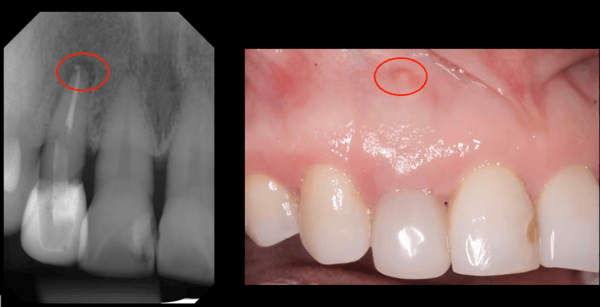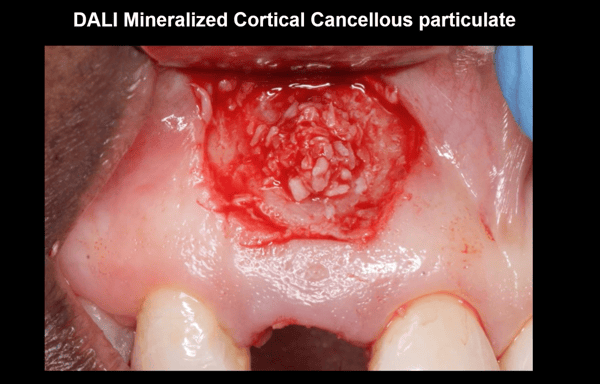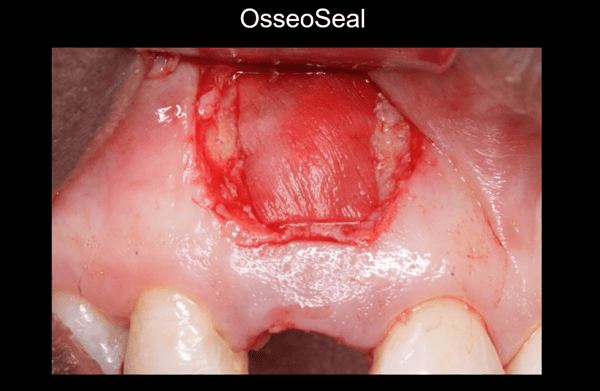This video discusses the regeneration of fenestration defects at the time of extraction and immediate implant placement. Specifically, the video shows the benefits of using a flexible porcine collagen membrane, like OsseoSeal, vs the classic, stiffer, bovine collagen membrane, like Neomem, in the treatment of these defects. Of course, the classic bovine collagen membranes have their indications, which we will cover in future videos, but in augmentation of these types of bony defects, the flexible collagen membranes, like OsseoSeal, are much preferred.
In the first case presented, tooth #7, had a root canal and it is clear from the radiograph and clinically that there is an infection at the apex of the root. The fenestration defect was exposed and cleaned following the extraction. The implant was then placed immediately in the socket, and the site was grafted with DALI Mineralized Cortical Cancellous Bone in order to close the defect, fill the area and encourage bone regeneration. An OsseoSeal membrane was then used to cover the area and extend over to the bony margins. OsseoSeal is extremely easy to handle, and as absorbs surrounding blood, it drapes and sucks down onto the surface. Take notice of the margins of the membranes, which are intimately adpated to the surrounding bone.
The second case discussed in the video, had a very similar clinical presentation and treatment plan. However, at the time, only a stiffer collagen membrane was available for use. As you can see, the stiffer collagen membrane was very difficult to use and handle. Same technique was used but the membrane just wouldn't stay, sutures were used to keep it in place. Also, if you look at the margins of the membrane, you can see that the membrane doesn't adapt to the surrounding bone, and you end up having space between the bone and membrane, which is not ideal for this procedure. Bottom line is that it was very frustrating to use this type of membrane in this particular case.


